Research Article Open Access
Effects of Cream Containing Ultralow Volume Radionuclides on Carrageenan- Induced Inflammatory Paw Edema in Mice
| Takahiro Kataoka, Yuji Takata, Reo Etani, Yuichi Nishiyama, Atsushi Kawabe, Katsumi Hanamoto, Takehito Taguchi and Kiyonori Yamaoka* | |
| Graduate School of Health Sciences, Okayama University, Kita-ku, Okayama-shi, Okayama 700-8558, Japan | |
| *Corresponding Author : | Professor Kiyonori Yamaoka Graduate School of Health Sciences Okayama University, 5-1 Shikata-cho 2-chome Kita-ku, Okayama-shi, Okayama 700-8558, Japan Tel/Fax: +81-86-235-6852 E-mail: yamaoka@md.okayama-u.ac.jp |
| Received May 08, 2014; Accepted May 24, 2014; Published May 30, 2014 | |
| Citation: Kataoka T, Takata Y, Etani R, Nishiyama Y, Kawabe A, et al. (2014) Effects of Cream Containing Ultralow Volume Radionuclides on Carrageenan-Induced Inflammatory Paw Edema in Mice. Biochem Physiol 3:133. doi:10.4172/2168-9652.1000133 | |
| Copyright: © 2014 Kataoka T, et al. This is an open-access article distributed under the terms of the Creative Commons Attribution License, which permits unrestricted use, distribution, and reproduction in any medium, provided the original author and source are credited. | |
Visit for more related articles at Biochemistry & Physiology: Open Access
Abstract
Low-dose irradiation activates antioxidative functions and inhibits oxidative damage. Although a wide range of health products have been developed using the activation of biological functions by low-dose irradiation, their effectiveness has not yet been confirmed. The purpose of this study was to determine whether cream containing ultralow volume radionuclides (UVR) protects against carrageenan-induced inflammatory paw edema in mice. Cream containing ultralow volume radionuclides (UVR-cream) or sham cream was applied to the right hind paw of mice and 50 μL of carrageenan was subsequently injected to the right hind paw. Results showed that carrageenan administration induced paw edema; however, application of UVR-cream significantly decreased paw volume at 4 hours. Application of UVR-cream produced slight improvement in carrageenan-induced paw edema compared with sham cream. However, no significant changes were observed in paw edema between sham cream and UVR-cream. Carrageenan administration significantly decreased catalase activity and total glutathione content in paw. No significant changes were observed in the catalase activity or t-GSH content in paw among carrageenan-only, sham cream, and UVR-cream. In conclusion, the effects of UVR-cream differed from the beneficial effects induced by lowdose irradiation, since application of the cream did not activate antioxidative functions.
Tables and Figures at a glance
| Table 1 |
Figures at a glance
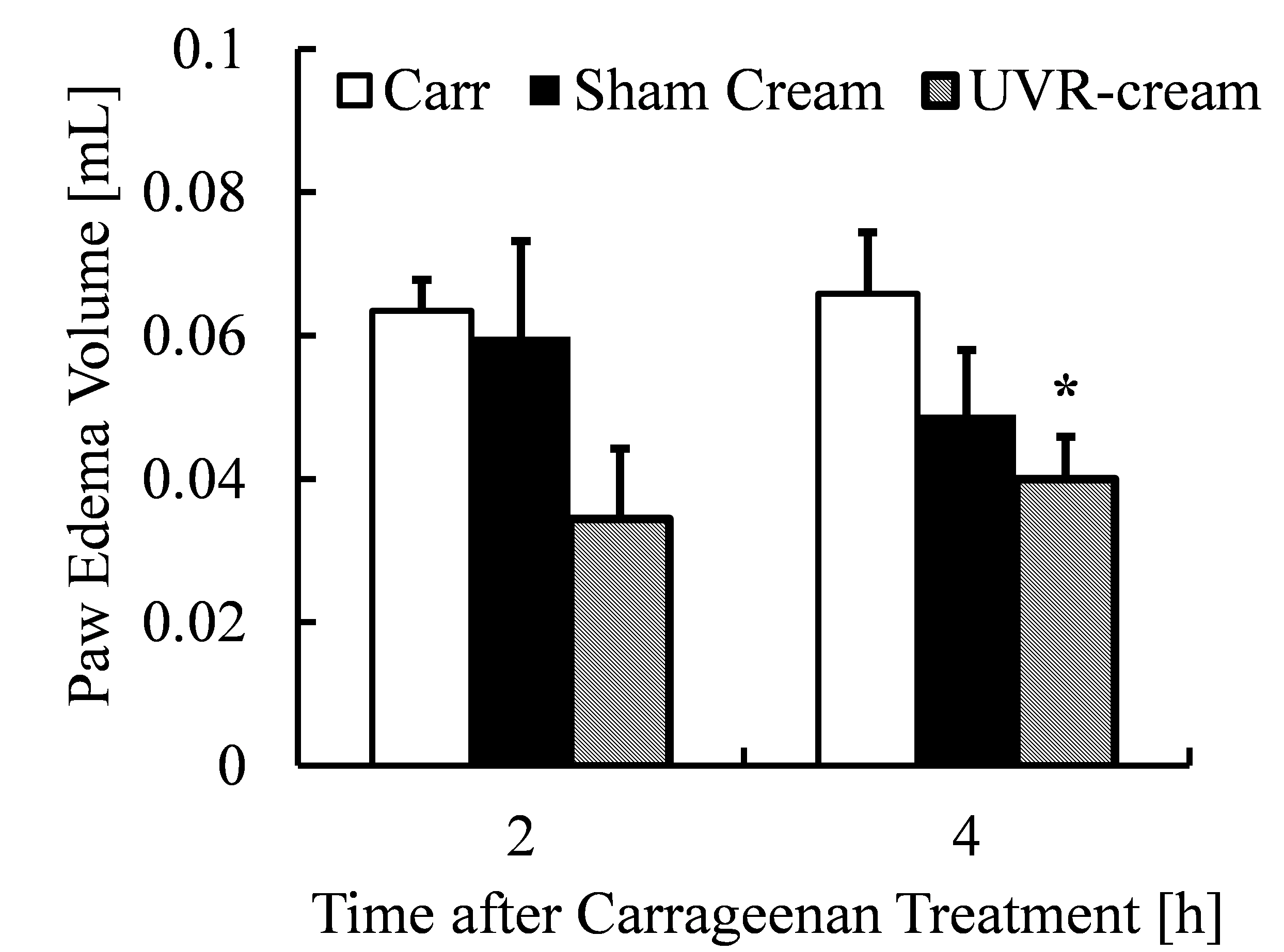 |
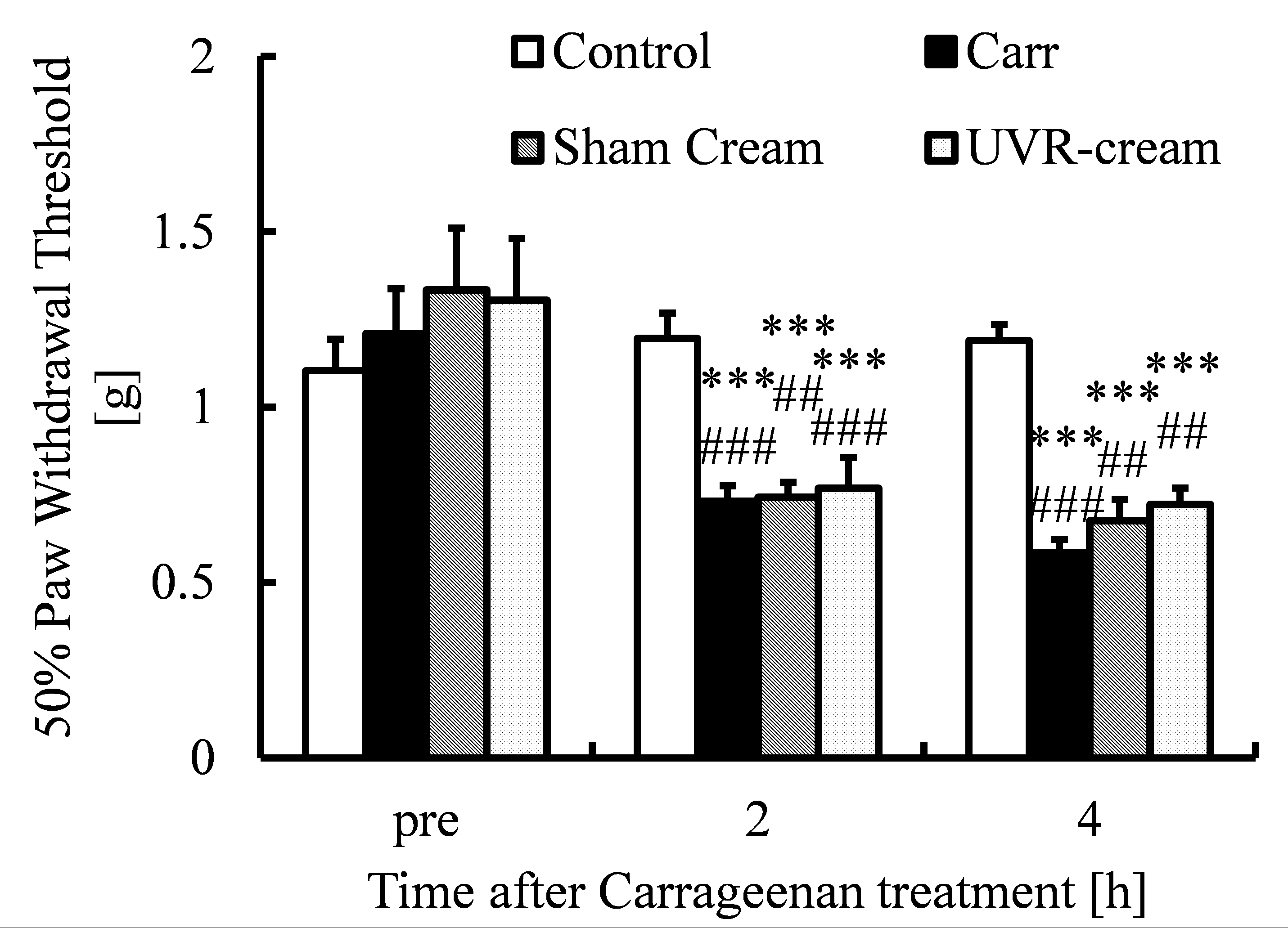 |
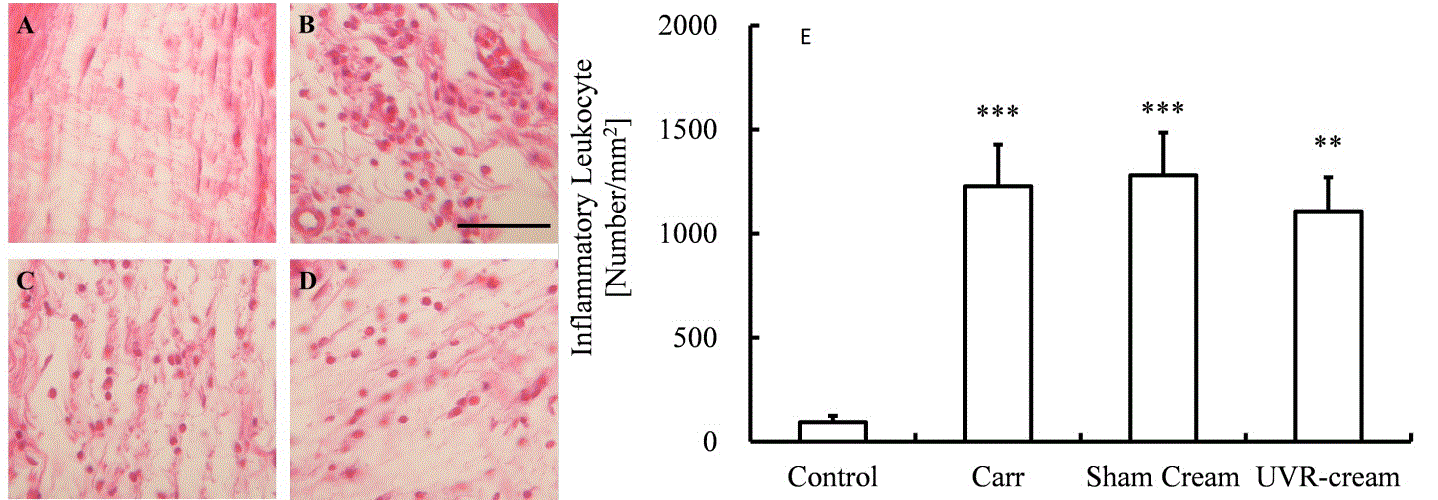 |
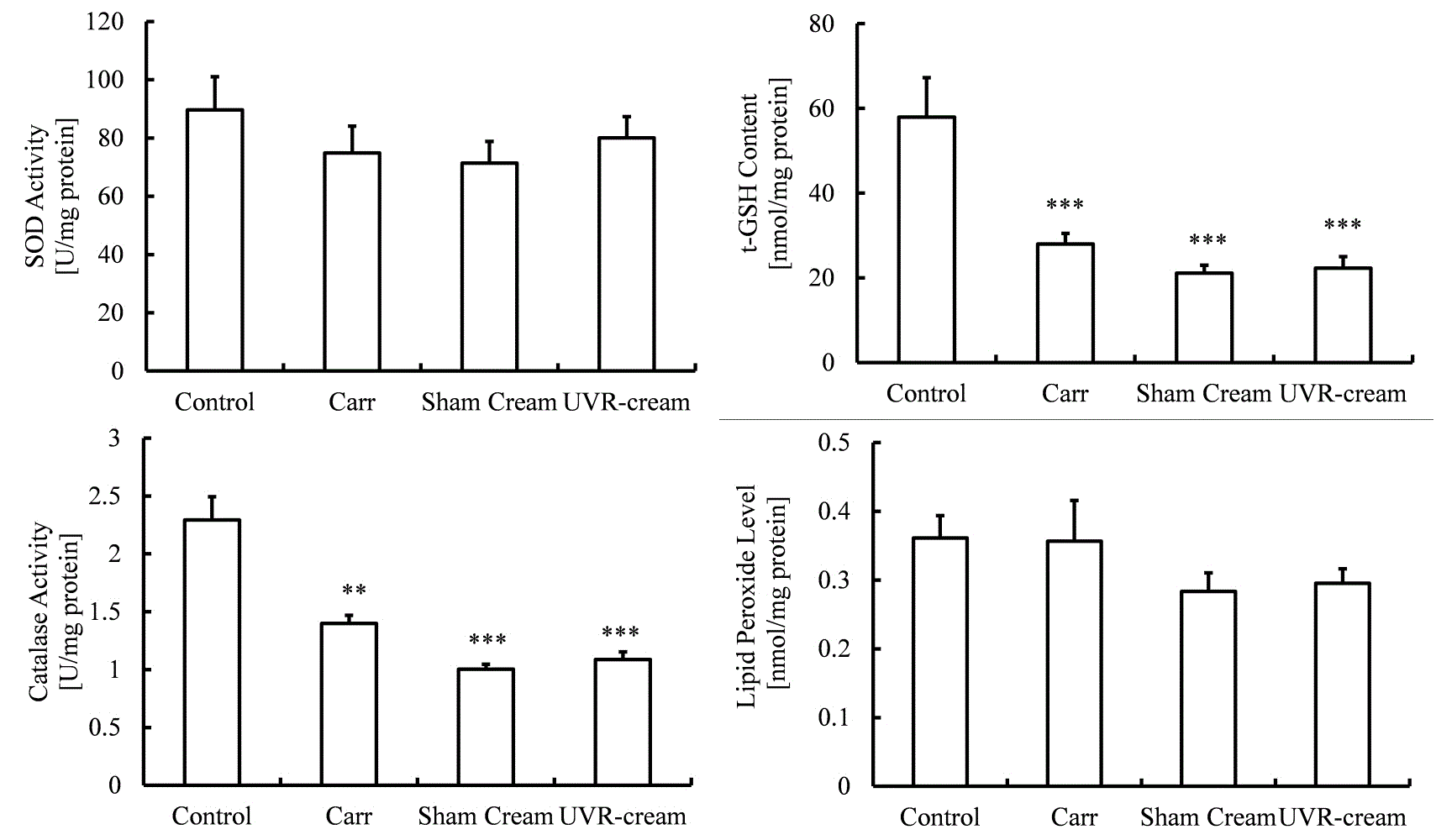 |
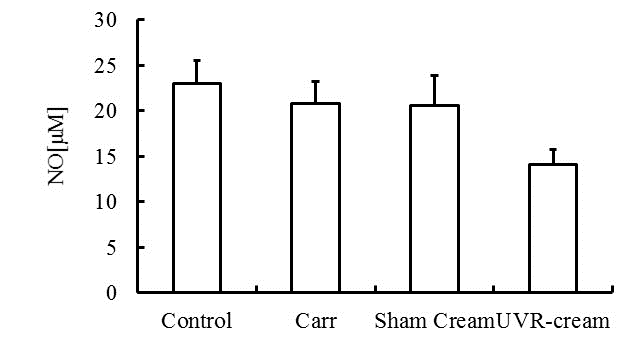 |
| Figure 1 | Figure 2 | Figure 3 | Figure 4 | Figure 5 |
Relevant Topics
- Analytical Biochemistry
- Applied Biochemistry
- Carbohydrate Biochemistry
- Cellular Biochemistry
- Clinical_Biochemistry
- Comparative Biochemistry
- Environmental Biochemistry
- Forensic Biochemistry
- Lipid Biochemistry
- Medical_Biochemistry
- Metabolomics
- Nutritional Biochemistry
- Pesticide Biochemistry
- Process Biochemistry
- Protein_Biochemistry
- Single-Cell Biochemistry
- Soil_Biochemistry
Recommended Journals
- Biosensor Journals
- Cellular Biology Journal
- Journal of Biochemistry and Microbial Toxicology
- Journal of Biochemistry and Cell Biology
- Journal of Biological and Medical Sciences
- Journal of Cell Biology & Immunology
- Journal of Cellular and Molecular Pharmacology
- Journal of Chemical Biology & Therapeutics
- Journal of Phytochemicistry And Biochemistry
Article Tools
Article Usage
- Total views: 13885
- [From(publication date):
June-2014 - Sep 03, 2025] - Breakdown by view type
- HTML page views : 9272
- PDF downloads : 4613
